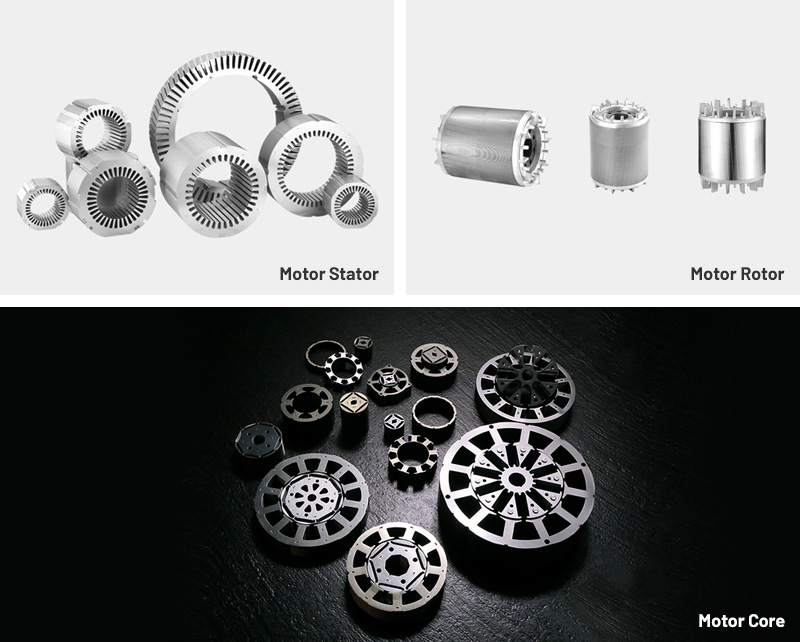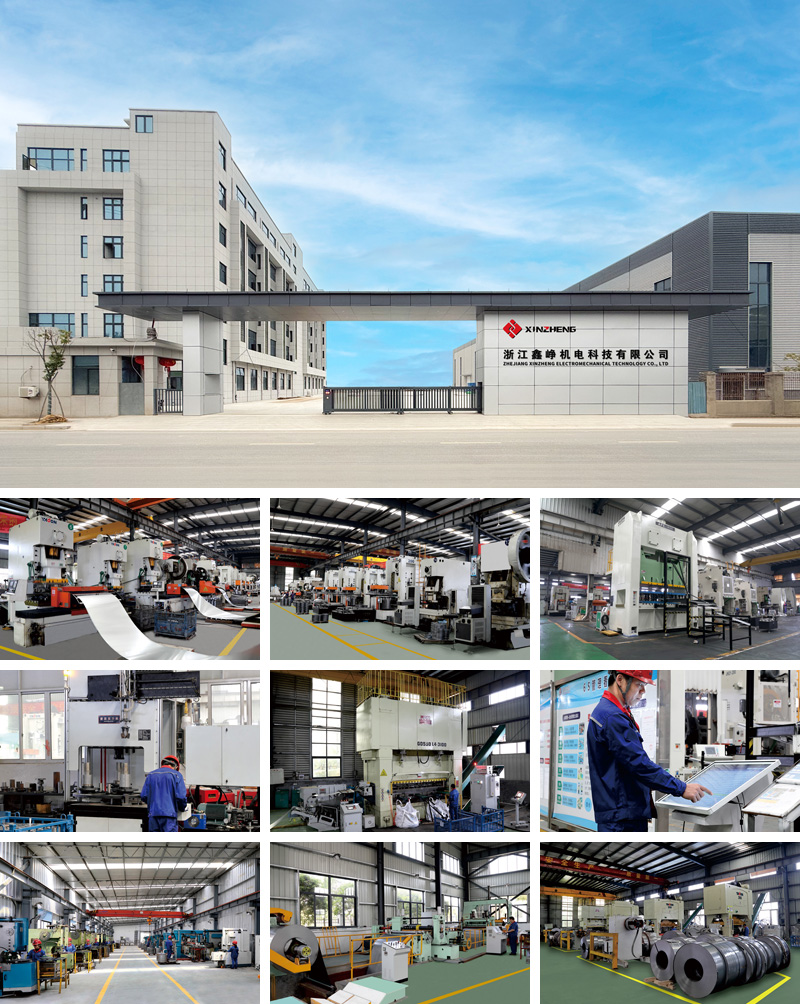Electric motor efficiency has become a central topic across manufacturing, industrial automation, HVAC systems, mobility, and energy-intensive sectors. As global regulations tighten around efficiency classes and emissions, motor manufacturers are required to extract more performance from traditional induction motor platforms. Within this context, high-precision Y1 motor laminations have gained renewed attention.
The Y1 motor series, widely used as a general-purpose industrial workhorse, relies on stable magnetic performance, consistent torque delivery, and long service life. To meet modern expectations—reduced core losses, lower operating temperatures, and improved reliability—manufacturers increasingly depend on the dimensional accuracy and magnetic quality of stator and rotor laminations. High-precision laminations have therefore shifted from being a commodity product to a critical engineering component that directly influences efficiency, noise levels, and long-term durability.
As supply chains diversify and motor designs converge toward global standards, companies are demanding laminations with better steel grades, uniform coatings, tighter tolerances, and advanced stacking technology. This article offers a comprehensive examination of high-precision Y1 motor laminations, from engineering fundamentals to procurement considerations and future development trends.
Motor laminations are thin sheets of electrical steel, stamped or cut into precise geometries, then stacked to form the stator and rotor core. Their primary purpose is to create a magnetic pathway that supports flux distribution while minimizing eddy-current losses.
In Y1 motors, the lamination profiles are specifically engineered for:
Efficient electromagnetic induction
Stable rotating magnetic fields
Lower mechanical vibration
Controlled temperature rise
Consistent torque across load conditions
The “high-precision” designation refers not only to the accuracy of the lamination geometry but also to uniformity in thickness, surface insulation consistency, stack alignment, and steel grade quality.
High-precision Y1 motor laminations typically utilize non-oriented electrical steel with silicon content engineered to provide:
High magnetic permeability
Low core losses under alternating magnetic fields
High saturation flux density
Mechanical strength suitable for stamping or punching
Depending on the performance class and manufacturing strategy, materials may range from standard-grade 50A to higher-grade, tighter-loss sheets rated for energy-efficient motors.
A thin insulation layer is essential to electrically isolate each lamination and reduce eddy-current loops. Coatings vary in:
Thermal class
Interlaminar resistance
Adhesion during stacking
Chemical resistance
High-precision laminations require uniform coating thickness to ensure consistent electrical behavior and predictable thermal performance.
Tight tolerances on slot width, rotor bar openings, inner and outer diameter concentricity, and stator tooth dimensions are central to performance. Precision directly affects:
Magnetic flux distribution
Rotor-stator air gap consistency
Torque ripple
Efficiency under partial-load conditions
Small deviations can lead to acoustic noise, vibration, increased heating, and premature bearing wear.
Typical processes include:
High-speed stamping using carbide dies
Laser cutting for prototype or specialty runs
Fine blanking for enhanced edge quality
Stacking and bonding techniques, such as welding, riveting, or glue bonding
For high-precision Y1 laminations, manufacturers often combine advanced stamping technology with automated inspection systems to ensure repeatability.
Core losses, magnetic flux density, and permeability directly determine the motor’s efficiency. The steel grade must be selected based on working frequency, required energy performance level, and long-term stability.
Even minor variations cause increased local heating or imbalances in flux distribution. Precision control in base material thickness is therefore essential.
Incomplete or uneven insulation leads to higher eddy-current losses and more heat generation. Both coating type and application method influence long-term performance.
Burrs produced during stamping interfere with stacking integrity and increase noise and mechanical stress. High-precision laminations maintain extremely low burr levels through optimized tooling and material treatment.
The air gap between rotor and stator is one of the most sensitive design parameters. Precision laminations significantly reduce variation, improving torque stability and reducing losses.
Misalignment or uneven compression affects the magnetic path and raises the risk of resonance and vibration. Automated stacking reduces error accumulation across the core height.
Global steel supply chains are subject to price fluctuations, inconsistent quality, and delivery uncertainties. Maintaining stable material properties remains a top challenge.
Stamping tools degrade over time, affecting tolerances and burr height. Regular maintenance and tool monitoring are essential for consistent quality.
High-precision laminations provide measurable performance benefits, yet manufacturers must balance these gains against cost constraints, especially for high-production motors.
As motors become smaller while delivering higher power, laminations must manage heat more effectively. Poor-quality cores amplify thermal issues.
Energy-efficiency standards differ across regions, requiring laminations that can satisfy multiple regulatory frameworks.
High-precision Y1 motor laminations are widely used across:
Conveyors, gearboxes, and material-handling systems benefit from improved torque consistency and reduced vibration.
Stable rotation and lowered operating temperature improve reliability in continuous-duty environments.
Energy efficiency and low noise operation are essential for modern air-handling systems.
Robust lamination designs support motors operating under fluctuating loads and harsh conditions.
The Y1 motor series remains a common choice for universal industrial applications, making high-precision laminations crucial for competitive performance advantages.
Choosing the right supplier for high-precision Y1 motor laminations requires evaluating more than unit price. Key considerations include:
Reliable suppliers provide full traceability for electrical steel, including batch information, loss data, and compliance certificates.
High-speed, low-burr stamping lines with automated measurement systems are essential for consistent quality.
Suppliers should offer design feedback, tooling optimization suggestions, and electromagnetic performance analysis.
Uniform coating application and testing processes help maintain predictable electrical performance.
Stable supply, short lead times, and the ability to scale production are critical in global manufacturing environments.
Several broader trends are shaping the next generation of Y1 motor lamination technology:
To satisfy increasingly strict efficiency regulations, manufacturers are shifting toward low-loss materials, even for standard motor series.
Inline measurement, data-driven stamping optimization, and intelligent inspection systems are becoming industry norms.
New insulation technologies aim to deliver higher thermal stability, corrosion resistance, and lower core losses.
Efforts to reduce material usage without compromising magnetic performance are pushing lamination optimization.
While Y1 motors are traditional designs, many manufacturers are upgrading them with lamination technology derived from premium-efficiency motors.
Higher performance expectations, tighter efficiency regulations, and the need for improved reliability all demand reduced losses and better magnetic uniformity.
Not necessarily. Precision processing can significantly improve performance even when using standard-grade steel, though premium grades further enhance results.
Slot geometry accuracy, burr height, and air-gap consistency directly impact noise and vibration levels.
Yes. Lower heat generation, stable rotation, and reduced vibration minimize insulation degradation and mechanical wear over time.
High-precision Y1 motor laminations are a foundational component that shapes the efficiency, durability, and overall performance of industrial motors. As manufacturing technologies advance and efficiency regulations tighten, the role of laminations continues to expand. By understanding material properties, production processes, design principles, and supply chain considerations, manufacturers are better equipped to build motors that meet modern industrial expectations.
Whether supporting general-purpose machinery, HVAC equipment, or continuous-duty systems, high-precision Y1 laminations provide measurable, long-term value by improving energy performance, reducing operational costs, and extending motor lifespan.
Product Category

Comprehensive Strength


Copyright © Zhejiang Xinzheng Electromechanical Technology Co., Ltd. All Rights Reserved.
This website uses cookies to ensure you get the best experience on our website.